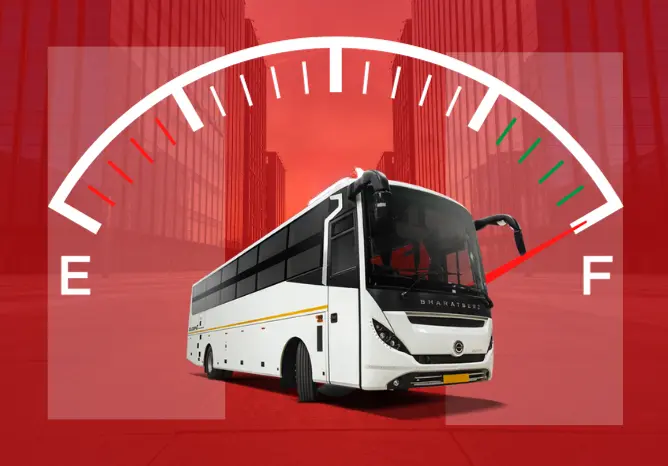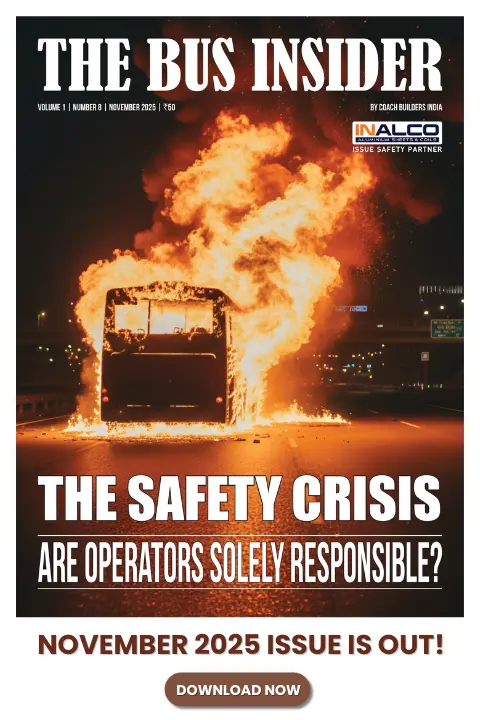Why Is It Advised to Tie Any Luggage Kept on the Roof of a Bus with a Rope?

Bus travel, especially on long routes, often involves storing luggage on the roof due to limited space inside. However, many passengers simply place their bags there without securing them properly, assuming they’ll stay put for the entire journey. But reality proves otherwise.
Imagine this: The bus is speeding down a highway, hits a pothole, and suddenly, a suitcase flies off the roof, landing in the middle of the road. Now, not only is the owner’s luggage gone, but it has also become a hazard for vehicles behind.
This is exactly why it is advised to tie any luggage kept on the roof of a bus with a rope—to prevent loss, theft, damage, and even accidents.
Let’s explore the major reasons why securing roof luggage is a must and how a simple rope can save you from a travel disaster.
1. Prevents Bags from Falling Off During Transit
Buses travel long distances, often at high speeds, on winding roads, rough terrain, and highways. Unsecured bags can easily slide, shift, or be thrown off due to:
- Sharp turns
- Sudden braking
- Speed bumps and potholes
- Strong winds on open roads
Once a bag falls off, it’s nearly impossible to retrieve—especially if the bus driver doesn’t notice. Worse, a falling suitcase or backpack can create dangerous situations for vehicles behind the bus.
Tying luggage ensures that no matter how bumpy the ride gets, everything stays in place.
2. Protects Against Theft at Stops and Stations
Long-distance bus journeys involve multiple stops at dhabas, bus terminals, and toll plazas. At these stops, thieves look for easy opportunities to snatch unattended bags from the roof, especially at night or in crowded areas.
Loose bags are easy targets for quick grabs, but a properly tied luggage setup:
- Makes it difficult for thieves to remove anything quickly.
- Creates a physical barrier, as untying knots takes time and attracts attention.
- Discourages casual theft, as thieves prefer easy, unsecured items.
If your luggage is tied tightly, it’s much safer from opportunistic thieves.
3. Prevents Damage to Luggage and Its Contents
Bus journeys can be rough, and bags on the roof experience constant shifting, shaking, and bumping. If not tied properly, your luggage can:
- Get crushed by other bags moving around.
- Tear open from friction against rough surfaces.
- Fall and suffer impact damage, breaking fragile items inside.
Securing luggage with a rope keeps everything in place, reducing unnecessary movement and preventing your bags from getting damaged.
4. Protects Bags from Harsh Weather Conditions
Weather can be unpredictable, and an unsecured bag on a bus roof is completely exposed to the elements. If a rainstorm, dust storm, or extreme heat hits during the journey, your luggage is at risk of:
- Getting soaked—ruining clothes, electronics, or important documents inside.
- Being covered in dust and dirt—damaging fabrics and making your bag look worn out.
- Overheating—if left under direct sun for long hours, which can be harmful to certain items like cosmetics, medicines, or food.
Bus operators sometimes use waterproof tarps, but they only work if the luggage is properly tied underneath. Without ropes, the wind can lift the tarp, exposing your bags to rain, dust, or extreme heat.
Tying your luggage keeps it covered and protected throughout the journey.
5. Avoids Mix-Ups and Passenger Disputes
Passengers often load and unload their luggage at different stops along the route. If bags are loosely placed on the roof, they:
- Might get mixed up with others’ luggage.
- Can be mistakenly taken by someone else at an earlier stop.
- Might shift to an inaccessible spot, making retrieval difficult.
By tying all the luggage together in an organized way, bus staff can:
- Ensure luggage stays in the correct position until the final destination.
- Make unloading easier and avoid confusion.
A simple rope can prevent major hassles when it’s time to retrieve your belongings.
6. Helps Organize Luggage More Efficiently
When bus staff load luggage onto the roof, they have to stack it carefully to fit everything. Loose bags create chaos, making it difficult to:
- Maximize space.
- Prevent damage due to shifting and falling bags.
- Ensure a smooth unloading process.
Tying everything together keeps luggage compact and structured, allowing for a neater, more efficient use of space.
7. Ensures Road Safety for Everyone
Loose bags falling off a moving bus aren’t just a loss for the owner—they’re a hazard for others on the road. A suitcase dropping onto a busy highway can:
- Cause accidents as drivers swerve to avoid it.
- Damage other vehicles if the falling bag hits a car, bike, or pedestrian.
- Create roadblocks, forcing authorities to clear the debris.
In some places, transport laws require proper luggage securing to ensure public safety. A simple rope can prevent a serious accident.
8. Avoids Excessive Charges for Lost or Damaged Luggage
When luggage is unsecured, there’s a risk of it falling off and getting damaged beyond repair. Not only will you lose your belongings, but you might also be liable for:
- Compensation Fees: If your luggage falls off and causes damage to other vehicles or property, you may be required to pay for repairs.
- Replacement Costs: In case your luggage is lost, you could be charged for the replacement of the item, leading to an unexpected financial burden.
- Legal Consequences: Some places may impose penalties for not securing luggage properly, which could result in additional fines.
Tying your luggage with a rope is a simple yet effective way to avoid these costly scenarios and save yourself from unwanted financial stress.
9. Prevents Luggage from Getting Caught in Bus Mechanics
Loose bags on the roof can interfere with the bus’s mechanical parts, leading to potential safety hazards. These include:
- Getting Caught in the Exhaust System: Bags can get caught in the exhaust system, causing damage to the bus or even creating a fire risk.
- Blocking Wheels or Axles: Luggage can fall into parts like the wheels or axles, risking a breakdown and jeopardizing the safety of the journey.
- Impact on Bus Operations: When luggage causes mechanical issues, the bus may have to stop, delaying travel and potentially affecting the schedule.
Securing your luggage prevents these scenarios, ensuring that the bus operates smoothly and without any unexpected technical problems.
10. Supports Sustainable Practices in Public Transport
Tying down your luggage isn’t just about your personal safety—it also contributes to a more responsible approach to travel. Here’s how:
- Reduces Road Hazards: Loose luggage can cause accidents by falling into the road, obstructing traffic, and creating dangerous conditions for other vehicles.
- Minimizes Environmental Impact: By securing luggage, you reduce the risk of debris, spills, or accidents that could negatively impact the environment.
- Promotes Safety Across the Board: Keeping luggage in place means fewer incidents that could lead to accidents, benefiting not only passengers but also the broader public.
Securing your luggage ties into the larger goal of making public transportation safer and more sustainable for everyone on the road.
How to Secure Luggage Properly on a Bus Roof
If your luggage is going on the roof of a bus, follow these simple tips for maximum security:
- Use Strong Ropes or Bungee Cords: Ensure that the ropes are durable and can handle the weight. Bungee cords are a good option for added flexibility.
- Stack Heavier Bags First: Place heavier items at the bottom to stabilize the load and prevent lighter bags from moving.
- Cover with a Waterproof Tarp: If available, cover your bags with a waterproof tarp and secure it tightly.
- Double-Check Knots: Before the bus starts moving, check that all knots are tight and secure.
- Keep Valuables Inside: Important documents, electronics, and money should always be kept with you, not on the roof.
- Check Roof Setup Regularly: During breaks or stops, check that the luggage is still secure and hasn’t shifted.
Next time you’re on a bus with luggage on the roof, don’t just hope it stays put—take the extra step to tie it down. A simple rope can safeguard your belongings, ensure safety, and help avoid unnecessary hassles. By securing your luggage properly, you can enjoy a stress-free and smooth journey from start to finish.
Catch the latest Bus Industry updates, Exclusive Interviews, Bus News, and International Bus News on Coach Builders India. Download the latest issue of the The Bus Insider magazine for more insights.






